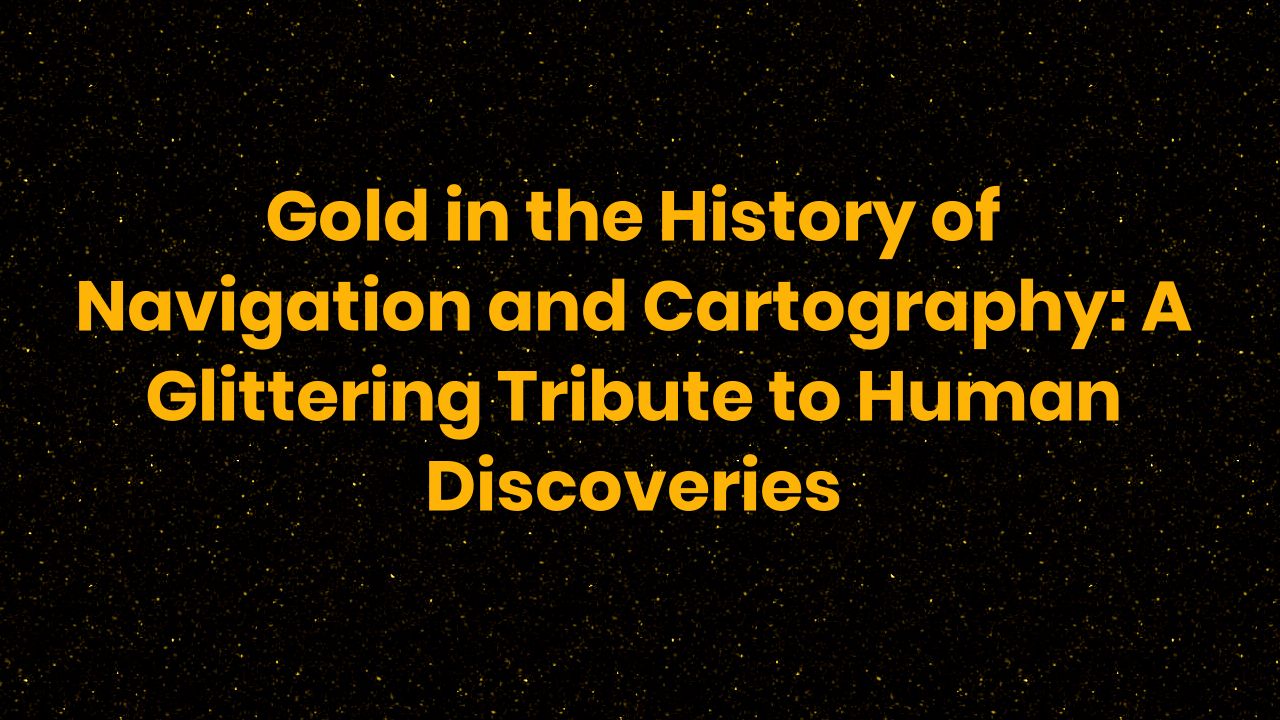
Table of Contents
Introduction: The Power of Gold as a Symbol of Wealth, Power and Discovery
Gold has fascinated humanity since ancient times, inspiring poetry, art, and exploration. The metal is rare, durable, and malleable, making it the perfect material for jewelry, coins, and ornaments. It has also been a symbol of wealth, power, and prestige, used by empires and civilizations to demonstrate their might and influence. The allure of gold has been a driving force behind countless voyages of discovery and exploration, leading to the creation and improvement of navigation and cartography. In this blog post, we will explore the fascinating history of gold in navigation and cartography, spanning from ancient times to the 21st century.
Gold in Ancient Navigation: From Egypt to the Mediterranean World
Gold played an important role in the navigation of the ancient world. The Egyptians, for example, used gold to adorn their ships and galleys, highlighting their status as one of the most powerful civilizations of their time. They also used gold in their astrolabes and other navigational instruments, which helped them to navigate the Nile river and the Mediterranean sea. The Phoenicians, the Greeks, and the Romans all followed suit, using gold to decorate their ships and navigational instruments, and to trade with other civilizations.
The Age of Exploration and the Conquest of the New World: A Golden Era of Discovery and Expansion
The Age of Exploration in the 15th and 16th centuries was a time of great discovery and expansion, driven in part by the search for gold and other valuable commodities. The Spanish conquistadors, for example, were motivated by the discovery of gold and silver in the New World, leading to the exploitation and enslavement of indigenous populations. The search for gold also spurred the exploration of other parts of the world, such as Africa, Asia, and the Pacific Islands, leading to new trade routes and cultural exchanges.
The Role of Gold in Cartography: From Ptolemy to Mercator
Gold has also been an important material in the field of cartography, the science and art of making maps. The Greek geographer Ptolemy, for example, used gold in his maps of the ancient world, highlighting the boundaries of territories and the locations of important cities and landmarks. The Flemish cartographer Gerardus Mercator also used gold in his maps of Europe and the world, creating accurate projections and grids that paved the way for modern cartography.
The Golden Age of Mapmaking: From the Renaissance to the Age of Enlightenment
The Golden Age of Mapmaking in the 16th and 17th centuries marked a period of great innovation and creativity, with cartographers using gold and other materials to create intricate and beautiful maps. Many of these maps were made for wealthy patrons or collectors, and featured detailed illustrations, ornate borders, and hidden symbols and messages. Some of the most famous mapmakers of this era include Abraham Ortelius, John Speed, and Willem Blaeu.
The Use of Gold in Modern Navigation: From GPS to Satellites
In modern times, gold is no longer used in navigation and cartography in the same way as in the past. However, it still has a role to play in modern technology, as many electronic devices, including GPS systems and satellites, rely on gold in their construction. Gold is an excellent conductor of electricity, making it ideal for use in microchips and other high-tech components.
How Gold Continues to Shape Our World, Inspire Discoveries and Transform our Perception of Geography
In conclusion, gold has played a crucial role in the history of navigation and cartography, shaping our understanding of the world and inspiring countless discoveries and innovations. While its role has changed over time, gold continues to shape our world and inspire us to explore and understand our planet in new and exciting ways. As we continue to rely on technology and innovation to explore the world around us, we can be sure that gold will continue to play a vital role in shaping our perception of geography and the universe.
Summary and Conclusion
In summary, gold has played a significant role in navigation and cartography throughout history. From the ancient Egyptians and Greeks to the Spanish conquistadors and modern-day electronics, gold has been essential in helping humans to explore and understand the world around us. It has served as a symbol of power, wealth, and discovery, inspiring countless voyages of exploration, the creation of maps and instruments, and technological advancements. As we continue to learn and grow, gold will undoubtedly continue to shape and inspire us in new and exciting ways, and fuel our desire to explore and understand the world around us.





